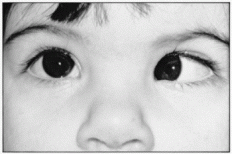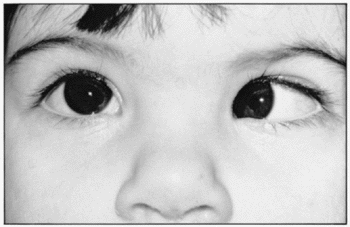Prior to being deployed in Afghanistan, I was seriously considering retirement. I had served for many years, and my wife and I felt I had spent enough time away from home. I made the arrangements and handed in my intent-to-retire papers to my commander. He looked at the papers and then at me. Before he could say anything I reached out, took the papers back, and said, “I’ll let you know when you can have that.” For some reason, I knew I still had work to do in the military. I was soon thereafter deployed with my Utah National Guard unit to Afghanistan. Even though I was being sent over as a[n] Apache helicopter pilot, I knew that there was another reason I was going. I knew there was something else for me to accomplish in Afghanistan.

Mormon Help Strabismus Patient
After our arrival in Bagram Air Base in north-central Afghanistan, our unit developed a unique relationship with the Egyptian military personnel who ran the Egyptian military hospital on the base. The Egyptian and Korean hospitals were the only sources the Afghanistan people had for medical treatment. Our soldiers routinely visited these hospitals, taking boxes of coats, shoes, clothing, and hygiene items our families had shipped over through the U.S. mail. The local Afghanis were overjoyed when we handed out these items through both hospitals.
I desired to assist Afghan villagers on a larger scale. Through persistence and a series of true miracles, I received permission for my unit to “adopt” two orphanages and two remote villages. Both orphanages and villages had numerous girls and boys. Family members in Utah shipped large quantities of goods, which we loaded in trucks and drove to the orphanages. There we handed out coats, shoes, clothing, and various humanitarian items. We also flew humanitarian items to the villages of Jegdalek and Mohammaday. The villagers thanked us profusely every time we made a trip. We also received many expressions from them about how grateful they were that America provided them with protection. They said, “We would still be under the bondage of the Taliban if America did not help.”
Whenever we flew aid to these villages, it affected us deeply to see children without shoes and coats in the wintertime. On our first trip to one of the villages, it also became painfully obvious that the villagers were suffering from medical tragedies in every category. They lined up with their sons, daughters, fathers, and brothers (but never with their wives) and asked us for help with one medical emergency after another. We reminded them that we were helicopter pilots and not medical personnel. They still lined up and unceasingly asked for help.
As I reviewed digital photos I took during one recent mission, a certain picture caught my eye. It was of a little girl with her eyes crossed. I studied her face and eyes and had the impression that I might be able to help her condition. I printed the photo and took it to Dr. Gobram, an Egyptian ophthalmologist who recognized the problem to be strabismus, a muscular disorder that prevents accurate focusing. If left untreated, her crossed eyes and resulting blurred sight would become permanent. We made surgical arrangements and scheduled our next trip to this village in one week to pick the girl up. The U.S. hospital generally does not treat Afghani locals. But with some determined persuasion on our part, it agreed to assist Dr. Gobram with the eye surgery. On our next rip we showed the village elders a picture of the young girl and asked if we could take her with us. We did not know what their reaction would be. We found a very gleeful father bringing his daughter in her “best” clothing for their CH47 (Chinook) ride back to Bagram. We then learned that this precious girl’s name was Halima. She was eight years old.
Prior to surgery, Halima needed to be cleaned up, so we took her to the on-base beauty salon operated by Russian women. All we asked them to do was wash her hair. They not only washed, curled, and styled her hair, but they also washed her feet, cleaned her shoes, gave her a pedicure, painted her toenails with flowers, and manicured and painted her fingernails. Considering the violent history between the Afghans and Russians, this tender sight was truly amazing to behold. The women would not accept any money, so we gave them generous tips. Halima’s face glowed with a nonstop smile.
A few hours after the surgery, we learned it had been a success. Her father woke her up, and she sat up with her unbandaged eyes closed. When she heard our voices, she squinted her eyes open and burst into a huge smile. This was our first hint that she could see. After one day of recovery, Halima was already seeing well, alert and ready to explore. Soldiers treated Halima and her father to lunch and dinner every day, including trips to the chow hall and the on-base Burger King. During her recovery, she watched all the Disney movies we had at our aviation chapel.
As the weeks and months went by, every time I visited her village this little girl broke ranks through the other girls, boys, men, and fathers and into the midst of the soldiers, taking turns holding our hands. Without words, this innocent child showed us her loving gratitude. During several of our visits, she would never leave my side.
Ultimately we were able to provide surgical aid to about ten other children. We also helped save the leg of one adult after the Taliban attempted to kill him by rolling a large boulder over him. One of the children we helped was a twelve-year-old boy who had never been able to simply run and play. When we first met Asadullah, a nickel-sized hole in his heart prevented him from running more than a few steps at a time. His skin was tinted blue. He was always hunkered over, trying to catch his breath. He would collapse on us. An army cardiologist diagnosed his heart defect to be VST (ventricle septal defect) and estimated he had only a few years to live. This problem required delicate heart surgery using advanced medical equipment, neither of which is available in Afghanistan.
I didn’t have a clue how we could help. But I had to begin somewhere, so I started emailing family and friends back home in Utah, seeking donated skills and money. This simple effort began a series of many miracles. My request made its way to a support group called AnySoldier.Com and was read by Chad and Shelby Everett (who are well-known actors from California). Chad Everett contacted Dr. Leonard L. Bailey (the famous doctor who implanted a baboon heart into Baby Fay). Dr. Bailey agreed to do the surgery and contacted Loma Linda Children’s Hospital, which also agreed to provide the facility for the surgery. Another letter found its way to JetBlue airlines, who contacted us and said they would like to fly Asadullah from New York to Loma Linda, California. JetBlue also contacted Pakistani Airlines and worked out free airfare from Islamabad, Pakistan, to New York. All of this, along with procuring the necessary travel visas and passports, took place in about ten days!
On February 4, 2005, a medical team led by Dr. Bailey successfully repaired the hole in Asadullah’s heart. The hospital and other charitable groups provided for the boy’s remaining expenses, as well as those of his father. After two months, Asadullah returned to his native Afghanistan, where he rejoined his mother and eight siblings.
On our last visit to the village, we said our heartfelt good-byes and boarded the CH47s for our last trip back to Bagram. As our helicopters began to lift off the ground, we looked out the windows and truly could not believe our eyes. We saw our friends in an Islamic community honoring us by flying an American flag!
These experiences have changed me and several of those with whom I served. Although we have since come home from our tours in Afghanistan, several of us are now working with Afghan locals to build an orphanage and school with capacity for a thousand children. . . .
I have often reflected on how and why the Lord allowed these wonderful events to transpire. It all started with our desire to assist children who had no shoes or coats. As we saw the people endure their severe medical calamities, our efforts quickly focused on offering medical attention. After our last trip, it was sadly clear to me that all our efforts could not clothe or heal everyone we came in contact with. But my understanding deepened when I realized how clothing and medical aid were used as tools to build lasting relationships. We were building relationships. I am convinced that when we have all passed on and we are on the other side, there will be a glorious reunion. The relationships we have created in this life will set the stage for mass conversions in the life to come.
Chief Warrant Officer 5 Layne S. Pace, Utah Army National Guard, Faith in the Service, p73–78.
Twitter •


 Watch a video about the restoration of the gospel on lds.org
Watch a video about the restoration of the gospel on lds.org